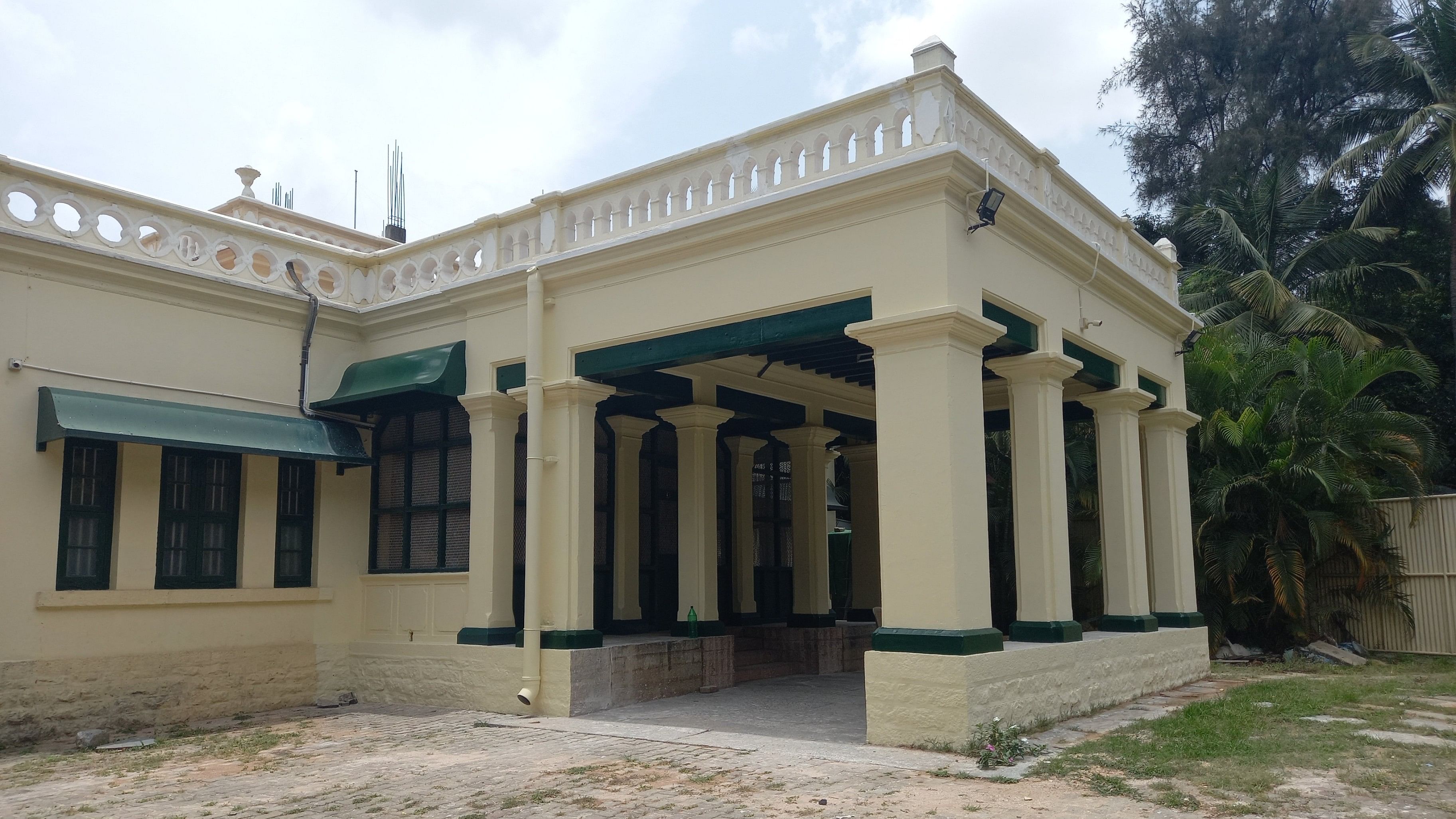
The entrance to the Maratha boys' hostel premises; the busts of the founders.
Photos by author
Bhojagade Venkata Rao was tired. The nine-year-old had walked to Bengaluru all the way from his village near Maddur. He sat down to rest for just a while. The next morning, a surprised householder found the lad sleeping on his doorstep. When he heard that Venkata Rao was looking for work, the merchant employed him in his silk yarn shop. So goes the family legend of how an impecunious Bhojagade Venkata Rao came to Bengaluru in the 1850s and eventually became a successful businessman.
Venkata Rao never forgot his early travails. According to his great granddaughter, author and academic Shakuntala Manay, it was why he took in boys from his community who came to Bengaluru for education or work. When he moved from Cubbonpet to Basavanagudi, he and his wife put up students in a neighbouring house. Venkata Rao died in 1907. In his will, he wished for a portion of his estate to be used for a hostel for poor Maratha students.
Venkata Rao’s widow, Thukku Bai, set aside Rs 40,000 for this purpose. “I really admire my great grandmother,” says Shakuntala. “She was quite a strong woman.” Thukku Bai also had a choultry built in Gavipuram, which was subsequently converted into a school, later famous for being actor Rajinikanth’s alma mater.
The task of setting up the hostel was entrusted to Sajjan Rao, Venkata Rao’s nephew and mentee, and later his business partner. Sajjan Rao himself donated Rs 4,000 for the hostel. Two other wealthy Marathas contributed similar amounts. By August 1909, a hostel opened in a rented house in Basavanagudi, with 23 Maratha students.
Simultaneously, Sajjan Rao requested the Mysore government for a free site for the hostel. The plea fell on favourable ears, but the hostel’s managing committee was not fully satisfied with either site that the government granted.
Around this time, a retired professor of geology named V S Sambasiva Iyer fell on hard times and was forced to give up his house named ‘Sambasadan’, located on Bull Temple Road.
The bungalow was just what the committee wanted. In 1930, they bought Sambasadan at a government auction. They had a few modifications made to the house. C Vittal Rao Jadav, a cloth merchant, built a large hall adjacent to it. And finally, the B Venkata Rao Mahratta Hostel found its new home.
Two years later, the hostel served as the venue for the first Mysore Maratha Conference. Inaugurating the grand gathering, Sir Mirza Ismail spoke glowingly of the Marathas’ efforts to advance education. The munificent Sajjan Rao chose the occasion to make a further donation of Rs 50,000 to the hostel. In recognition of his substantial contributions, the managing committee decided in 1939, to change the hostel’s name to B Venkata Rao S Sajjan Rao Mahratta Students’ Home. Heading the list of those who approved this change and also set down rules for the hostel’s working was Thukku Bai.
Beside the old bungalow
Today, the Vittal Rao Memorial Hall is a popular wedding venue. Although it has been modified with additions like modern tiles, you can still see the building as it was when the delegates of the 1932 Maratha Conference posed in front of it.
The old hostel building, currently unused, looks like the geologist Sambasiva Iyer might step out of it at any moment. It is a simple bungalow with straight lines, topped with a simple parapet. Curved windows and hoods, now painted green, contrast pleasantly with the cream walls. A portico with square pillars leads to the entrance. The recently restored structure has a large, well-lit central hall and several smaller rooms.
The hostel itself now functions from a new building next to the old bungalow. The first thing you see on entering are busts of the hostel’s three founders: Venkata Rao Bhojagade, Thukku Bai and Sajjan Rao. These were installed in 2021 by Bhoomanand Manay, then the president of the managing committee.
I wandered into the reading room to look at photographs lining the walls, showing committee members and students from a bygone age, wearing turbans, coats and panches. A young student was there, studying. He was from a village near Bijapur, and wanted to be an engineer. Just like in 1909, the hostel continues to provide a home for young men who come from around Karnataka, hoping to better their lives.
(Meera Iyer is a writer, independent researcher and the Convenor of INTACH Bengaluru Chapter.)